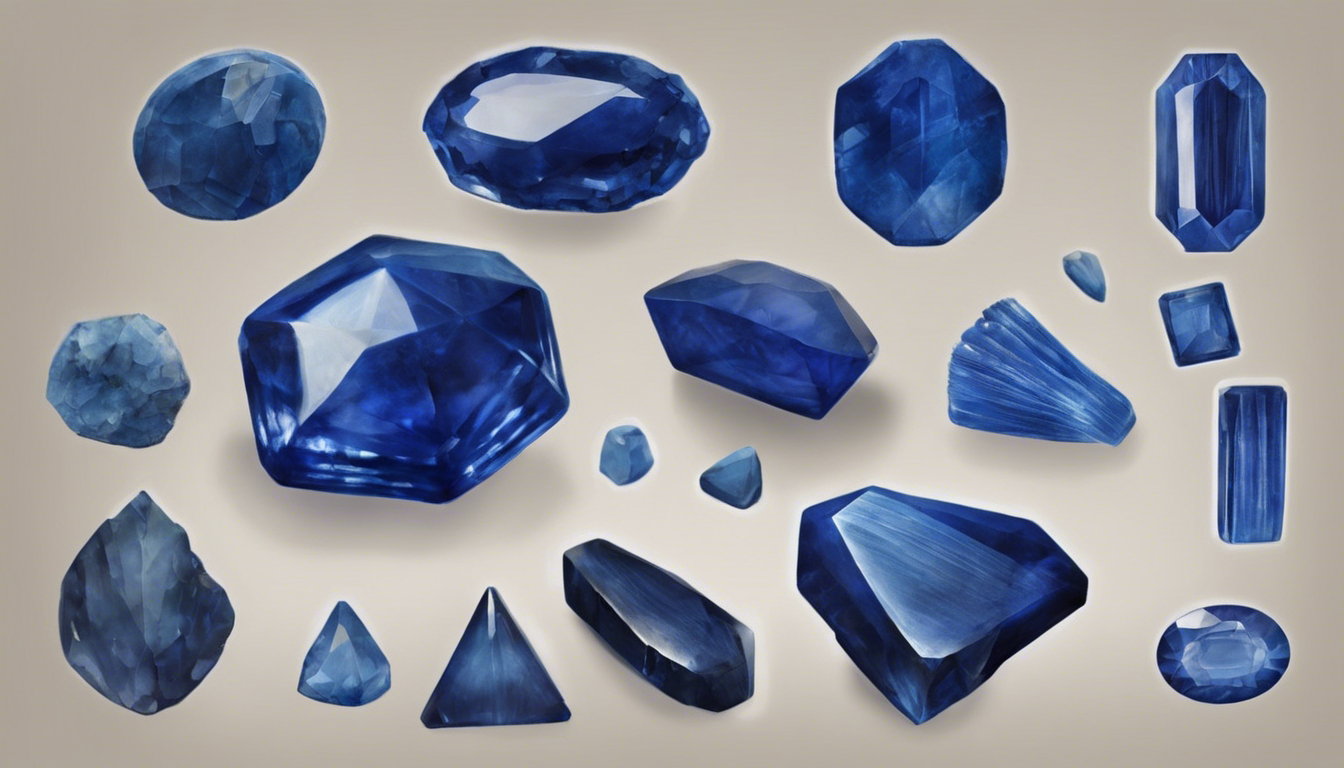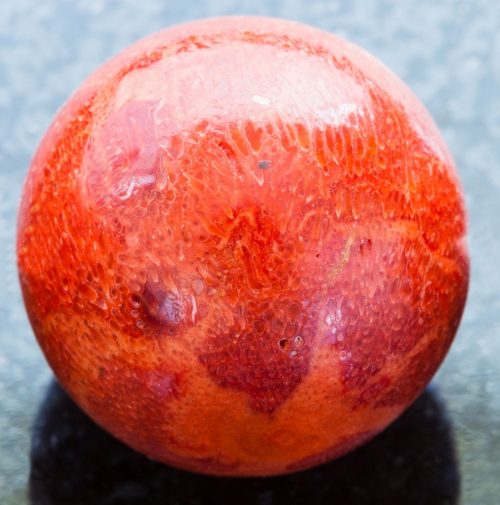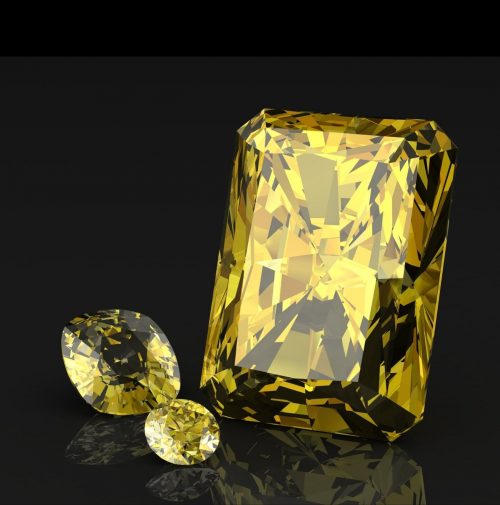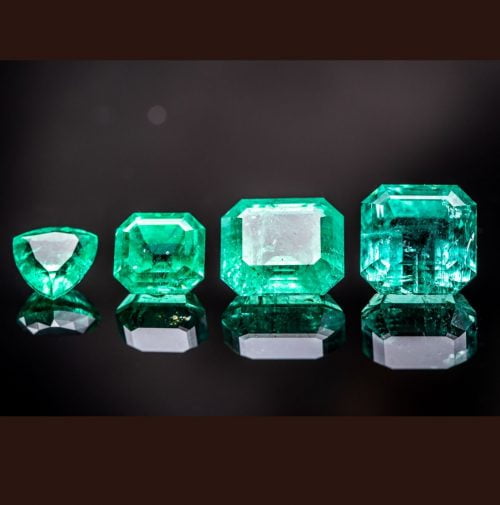Kyanite: The Stone of Transformation and Spiritual Growth

I. Introduction
Kyanite, a captivating gemstone with its striking blue hues and bladed crystal structure, is a powerful ally for those seeking transformation and spiritual growth. This mesmerizing stone possesses a unique energy that resonates with the throat chakra, promoting clear communication, self-expression, and the ability to speak one’s truth.
Unveiling the Beauty of Kyanite:
- Color and Clarity: Kyanite’s most distinctive feature is its vibrant blue color, ranging from deep sapphire to pale sky blue. It often exhibits a chatoyant effect, displaying a silky sheen when viewed from different angles.
- Crystal Structure: Kyanite’s bladed crystal structure is one of its most recognizable characteristics. These long, slender crystals often form parallel groups, creating a unique and visually appealing appearance.
Metaphysical Properties of Kyanite:
- Communication and Self-Expression: Kyanite is a powerful stone for enhancing communication and self-expression. It helps to remove blockages in the throat chakra, allowing for clear and effective communication of one’s thoughts and feelings.
- Spiritual Growth and Transformation: Kyanite is a stone of transformation, aiding in the process of letting go of old patterns and beliefs that no longer serve one’s highest good. It encourages spiritual growth and the development of a deeper connection to one’s inner self.
- Emotional Healing: Kyanite’s calming energy helps to soothe emotional turmoil and bring about a sense of peace and tranquility. It can assist in releasing negative emotions, such as anger, fear, and resentment, and promotes emotional healing and balance.
Harnessing the Power of Kyanite:
- Meditation and Spiritual Practices: Kyanite is an excellent stone for meditation and spiritual practices. Holding or placing a piece of Kyanite near the throat chakra during meditation can help to open and activate this energy center, facilitating deeper states of consciousness.
- Jewelry and Talismans: Wearing Kyanite jewelry or carrying a Kyanite talisman can provide a continuous connection to its energy throughout the day. This can be particularly beneficial for those seeking to enhance their communication skills, promote spiritual growth, or release emotional blockages.
Kyanite, with its captivating beauty and powerful metaphysical properties, is a valuable companion for those seeking transformation and spiritual growth. Whether used in meditation, worn as jewelry, or carried as a talisman, this remarkable stone can assist in unlocking one’s full potential and embracing a life of authenticity and purpose.
A. Definition of Kyanite:
Kyanite, a captivating gemstone known for its striking blue hues and unique bladed crystal structure, belongs to the aluminosilicate mineral group. Its name is derived from the Greek word “kyanos,” meaning “deep blue,” a fitting description for this mesmerizing stone. Kyanite is a relatively rare gemstone, and its distinct appearance and metaphysical properties have made it a popular choice among collectors, jewelry enthusiasts, and those seeking spiritual growth.
B. Importance and Popularity of Gemstones:
Throughout history, gemstones have held a significant place in human culture. They have been prized for their beauty, rarity, and perceived mystical powers. Gemstones have been used in jewelry, talismans, and objects of religious devotion for centuries. In modern times, gemstones continue to be highly sought after for their aesthetic appeal, investment value, and potential healing properties.
C. Brief Overview of the Essay’s Focus on Kyanite:
This essay delves into the fascinating world of Kyanite, exploring its unique characteristics, metaphysical properties, and the reasons behind its popularity. We will uncover the history, symbolism, and cultural significance of Kyanite, as well as its potential benefits for personal growth and spiritual development. By the end of this essay, readers will gain a deeper understanding and appreciation for this remarkable gemstone.
II. History of Kyanite
A. Origins and Discovery:
Kyanite’s origins can be traced back to the formation of metamorphic rocks deep within the Earth’s crust. It is primarily found in high-pressure environments, such as near tectonic plate boundaries or in the contact zones of igneous intrusions. Kyanite was first discovered in the Swiss Alps in 1789 by the renowned mineralogist Abraham Gottlob Werner. He named the mineral “cyanite” due to its characteristic blue color.
B. Cultural Significance and Historical Uses:
Kyanite has been used for centuries in various cultures around the world. In ancient Egypt, it was believed to possess mystical powers and was often used in amulets and talismans. Native American tribes also valued Kyanite for its spiritual significance and used it in rituals and ceremonies. In China, Kyanite was believed to promote good luck and harmony, and was often carved into figurines and other decorative objects.
C. Evolution of its Use as a Gemstone:
In the early 20th century, Kyanite began to gain popularity as a gemstone. Its unique blue color and chatoyant effect made it a desirable choice for jewelry designers. Initially, Kyanite was primarily used in cabochon form, but advancements in cutting and polishing techniques allowed for the creation of faceted Kyanite gemstones. Today, Kyanite is prized by collectors and jewelry enthusiasts alike for its beauty, rarity, and metaphysical properties.
Despite its growing popularity, Kyanite remains a relatively rare gemstone compared to more common stones like diamonds or sapphires. This scarcity, combined with its unique characteristics, has contributed to Kyanite’s value and desirability in the gemstone market.
III. Physical and Chemical Properties
A. Composition and Structure:
Kyanite is a silicate mineral with the chemical formula Al2SiO5. It belongs to the aluminosilicate mineral group, which also includes minerals such as andalusite and sillimanite. Kyanite’s crystal structure is unique, consisting of long, slender crystals that are typically arranged in parallel groups. This bladed structure gives Kyanite its characteristic fibrous appearance.
B. Color Variations and Their Significance:
Kyanite is most commonly known for its vibrant blue color, which can range from deep sapphire to pale sky blue. However, Kyanite can also be found in other colors, including green, yellow, orange, and even colorless. The color of Kyanite is determined by the presence of trace elements and impurities. For example, the blue color is caused by the presence of titanium and iron, while green Kyanite owes its color to chromium.
C. Hardness and Durability:
Kyanite is a relatively hard gemstone, with a Mohs hardness of 4.5 to 5. This means that it is resistant to scratching and abrasion, making it suitable for use in jewelry and other decorative applications. However, Kyanite is also brittle, meaning that it can break or chip if subjected to sudden impacts or excessive force.
The hardness and durability of Kyanite vary depending on the direction of the crystal. It is harder along the length of the crystal and more brittle across the width. This anisotropy can make Kyanite challenging to cut and polish, but skilled gem cutters can take advantage of this property to create unique and visually appealing gemstones.
IV. Geological Occurrence
A. Natural Deposits and Sources:
Kyanite is a relatively rare gemstone, and its natural deposits are found in limited locations around the world. Some of the notable sources of Kyanite include:
- Brazil: Brazil is one of the largest producers of Kyanite, with significant deposits found in the states of Minas Gerais and Bahia.
- India: India is another major source of Kyanite, with deposits located in the states of Odisha, Jharkhand, and Karnataka.
- Kenya: Kenya has substantial Kyanite deposits, particularly in the Taita-Taveta region.
- Switzerland: Kyanite was first discovered in the Swiss Alps, and deposits can still be found in the cantons of Ticino and Graubünden.
- United States: Kyanite deposits are found in several states, including North Carolina, Virginia, and Georgia.
B. Mining and Extraction Processes:
Kyanite is typically mined using open-pit or underground mining methods, depending on the nature of the deposit. Once extracted from the earth, the Kyanite ore is processed to remove impurities and obtain the pure mineral. This process may involve crushing, grinding, and flotation techniques.
C. Rarity and Value:
Kyanite is a relatively rare gemstone compared to more common stones like diamonds or sapphires. Its scarcity, combined with its unique color and properties, contributes to its value in the gemstone market. High-quality Kyanite gemstones with intense blue color and good clarity can command premium prices.
The rarity of Kyanite is also influenced by the fact that it is not always easy to mine and extract. The bladed crystal structure of Kyanite can make it challenging to obtain large, undamaged crystals suitable for gemstone cutting.
V. Metaphysical and Healing Properties
A. Beliefs and Folklore Surrounding Kyanite:
Kyanite has been associated with a variety of beliefs and folklore throughout history. In ancient Egypt, it was believed to possess mystical powers and was often used in amulets and talismans. Native American tribes considered Kyanite to be a sacred stone and used it in rituals and ceremonies to promote healing and spiritual growth. In China, Kyanite was believed to bring good luck and harmony, and was often carved into figurines and other decorative objects.
B. Spiritual and Healing Uses:
In modern times, Kyanite is still highly valued for its metaphysical and healing properties. It is believed to have a calming and soothing effect on the mind and emotions, helping to reduce stress, anxiety, and anger. Kyanite is also said to promote spiritual growth and development, enhancing intuition and psychic abilities.
In crystal healing practices, Kyanite is often used to align and balance the chakras, particularly the Throat Chakra, which is associated with communication and self-expression. It is also believed to be beneficial for healing physical ailments related to the throat, thyroid, and nervous system.
C. Modern-Day Metaphysical Significance:
Today, Kyanite remains a popular gemstone among those seeking spiritual growth and healing. Its unique blue color and bladed crystal structure are said to resonate with the higher chakras, promoting a connection to the divine. Kyanite is often used in meditation and spiritual practices to enhance intuition, clarity, and inner peace.
Whether one believes in the metaphysical properties of gemstones or not, there is no denying the beauty and allure of Kyanite. Its captivating blue color and unique crystal structure make it a popular choice for jewelry, decorative objects, and spiritual tools.
VI. Uses and Applications
A. Jewelry and Ornamental Uses:
Kyanite’s striking blue color and unique crystal structure make it a popular choice for jewelry and ornamental purposes. It is often cut into cabochons, beads, and faceted gemstones for use in necklaces, earrings, bracelets, and rings. Kyanite’s durability and resistance to scratching make it suitable for everyday wear, and its unique appearance adds a touch of elegance and sophistication to any outfit.
In addition to jewelry, Kyanite is also used in a variety of ornamental applications, such as sculptures, carvings, and decorative objects. Its vibrant blue color and interesting crystal structure make it a visually appealing choice for home décor and other decorative purposes.
B. Industrial and Commercial Applications:
Kyanite has a number of industrial and commercial applications due to its unique properties. Its high melting point and resistance to thermal shock make it useful in the production of refractory materials, which are used in high-temperature applications such as kilns and furnaces. Kyanite is also used in the production of ceramic glazes and enamels, where it adds strength and durability to the finished product.
In the aerospace industry, Kyanite is used as a lightweight and heat-resistant material in the construction of rockets and spacecraft. Its low thermal expansion coefficient makes it ideal for applications where dimensional stability is critical.
C. Kyanite in Alternative Medicine and Holistic Practices:
Kyanite is also used in alternative medicine and holistic practices for its believed healing properties. It is often used in crystal healing to promote spiritual growth, reduce stress and anxiety, and enhance intuition and psychic abilities. Kyanite is also believed to be beneficial for physical ailments related to the throat, thyroid, and nervous system.
While there is no scientific evidence to support the metaphysical or healing properties of Kyanite, many people believe that it can have a positive impact on their physical and emotional well-being.
Overall, Kyanite is a versatile mineral with a wide range of uses and applications, from jewelry and ornamental objects to industrial and commercial products, and even in alternative medicine and holistic practices.
General FAQs for Kyanite
What is Kyanite?
- Kyanite is a silicate mineral known for its striking blue color and bladed crystal structure. It is a relatively rare gemstone and is found in limited locations around the world.
What is the color of Kyanite?
- Kyanite is most commonly known for its vibrant blue color, but it can also be found in other colors such as green, yellow, orange, and black.
Where is Kyanite found?
- Kyanite is found in metamorphic rocks that have been subjected to high temperatures and pressures. Notable sources of Kyanite include Brazil, India, Kenya, Switzerland, and the United States.
What is Kyanite used for?
- Kyanite is primarily used as a gemstone in jewelry and ornamental applications. It is also used in industrial and commercial applications, such as the production of refractory materials, ceramic glazes, and enamels.
What are the metaphysical properties of Kyanite?
- Kyanite is believed to have a calming and soothing effect on the mind and emotions, helping to reduce stress, anxiety, and anger. It is also said to promote spiritual growth and development, enhancing intuition and psychic abilities.
Is Kyanite a valuable gemstone?
- Kyanite is a relatively rare gemstone, and its value is determined by factors such as its color, clarity, and size. High-quality Kyanite gemstones with intense blue color and good clarity can command premium prices.
How can I care for my Kyanite jewelry?
- Kyanite is a durable gemstone, but it can be scratched by harder materials. It is recommended to store Kyanite jewelry separately from other gemstones to avoid damage. Kyanite can be cleaned using a mild detergent and warm water.
Where can I buy Kyanite jewelry or gemstones?
- Kyanite jewelry and gemstones can be purchased from a variety of sources, including online retailers, specialty gemstone stores, and jewelry stores. It is important to do your research and choose a reputable seller to ensure the authenticity and quality of your purchase.
Conclusion:
Kyanite is a powerful gemstone with a range of metaphysical and healing properties that can help you unlock your full potential and live a more fulfilling life. Whether you are seeking spiritual growth, emotional healing, or simply a beautiful and unique gemstone to add to your collection, Kyanite is an excellent choice.
At 360 Real Astrology, we are passionate about helping people discover the transformative power of gemstones and astrology. Our team of experienced astrologers and gemologists can guide you on your journey to finding the perfect Kyanite gemstone for your individual needs.
We offer a range of services to help you get the most out of your Kyanite gemstone, including:
- Personalized astrological consultations to determine the best Kyanite gemstone for your unique birth chart and life path.
- Custom gemstone recommendations based on your specific needs and goals.
- Guidance on how to use and care for your Kyanite gemstone to maximize its benefits.
If you are ready to unlock the power of Kyanite and transform your life, we invite you to contact us today. Our team of experts is here to help you find the perfect gemstone and guide you on your journey to a more fulfilling and prosperous life.
Visit our website at https://360realastrology.com/ to learn more and book your consultation. Together, we can create your own reality!
Thank you for your interest in booking an astrological birth-chart reading with 360 Real Astrology. We are excited to help you unlock the secrets of your birth chart and discover your unique potential.
To book your reading, please visit our website at https://360realastrology.com/page/contact-us/. You will find a contact form where you can provide us with your basic information and request a reading.
Our team of experienced astrologers will review your request and contact you to schedule a convenient time for your reading. During the reading, our astrologer will analyze your birth chart in detail and provide you with insights into your personality, strengths, weaknesses, and life path.
We offer a range of reading options to suit your individual needs and budget. You can choose from a basic birth chart reading to a more in-depth analysis that includes predictions and recommendations for the future.
Once you have booked your reading, you will receive a confirmation email with all the details. We look forward to helping you on your journey of self-discovery and transformation.
If you have any questions or need assistance with booking your reading, please do not hesitate to contact us. Our friendly and knowledgeable team is here to help.
Musa Modern Astrologer and Gemologist 360 Real Astrology
Strong External Website Links for More Information about Kyanite
General Information and Properties:
- Kyanite on Mindat.org: Detailed information about Kyanite’s mineralogy, crystallography, and physical properties.
- Kyanite on GIA.edu: Article about Kyanite, including its history, sources, and use as a gemstone.
- Kyanite on Geology.com: Overview of Kyanite’s geological occurrence, properties, and uses.
Metaphysical and Healing Properties:
- Kyanite on CrystalVaults.com: Detailed description of Kyanite’s metaphysical properties and uses in crystal healing.
- Kyanite on HealingCrystals.com: Article about the healing properties of Kyanite and how to use it for emotional and spiritual healing.
- Kyanite on GemSelect.com: Information about Kyanite’s metaphysical properties and its use in meditation and spiritual practices.
Jewelry and Ornamental Uses:
- Kyanite Jewelry on JTV.com: Collection of Kyanite jewelry, including necklaces, earrings, bracelets, and rings.
- Kyanite Gemstones on GemSociety.org: Article about Kyanite gemstones, including their history, properties, and care.
- Kyanite Carvings on Etsy.com: Collection of Kyanite carvings, including sculptures, figurines, and decorative objects.
Industrial and Commercial Applications:
- Kyanite in Industry on AZoMining.com: Article about the industrial uses of Kyanite, including its applications in refractory materials and ceramics.
- Kyanite in Aerospace on ScienceDirect: Research paper on the use of Kyanite in aerospace applications, such as rocket nozzles and heat shields.
We hope these links provide you with additional information and resources about Kyanite.








Connect me